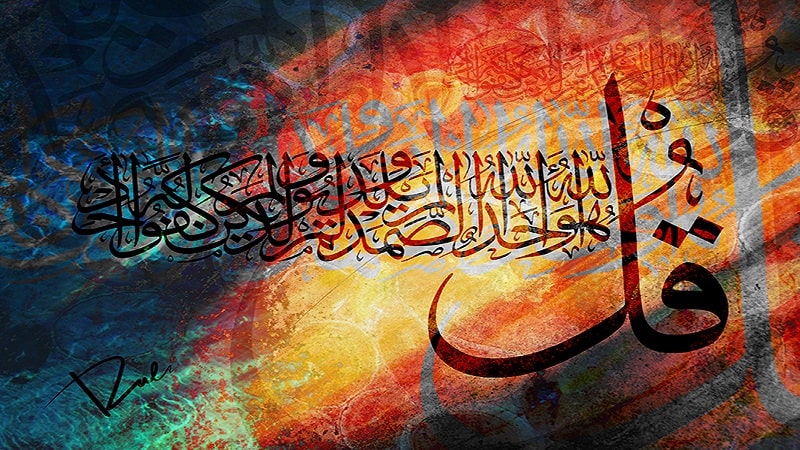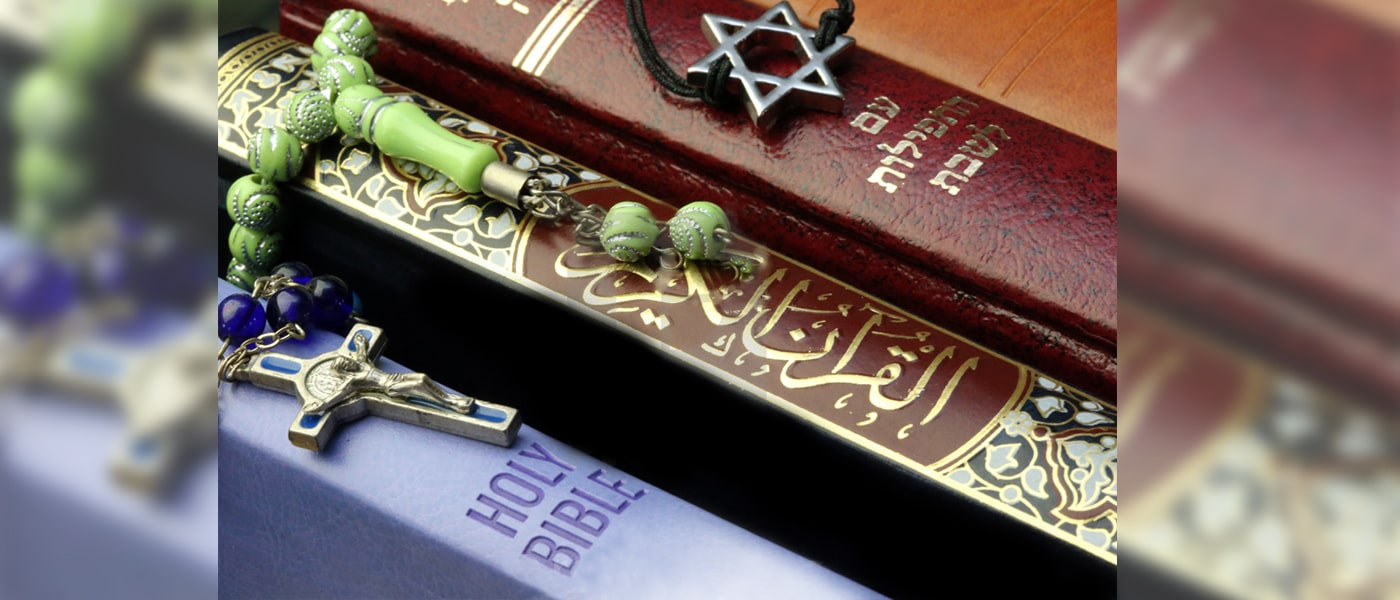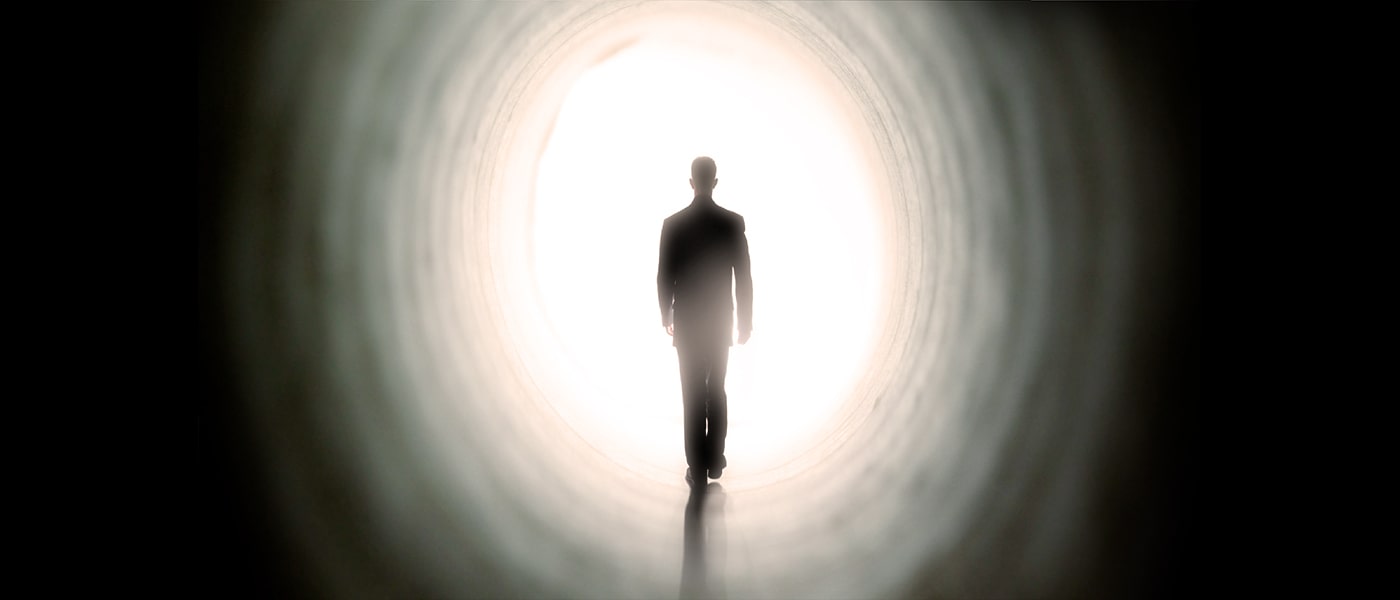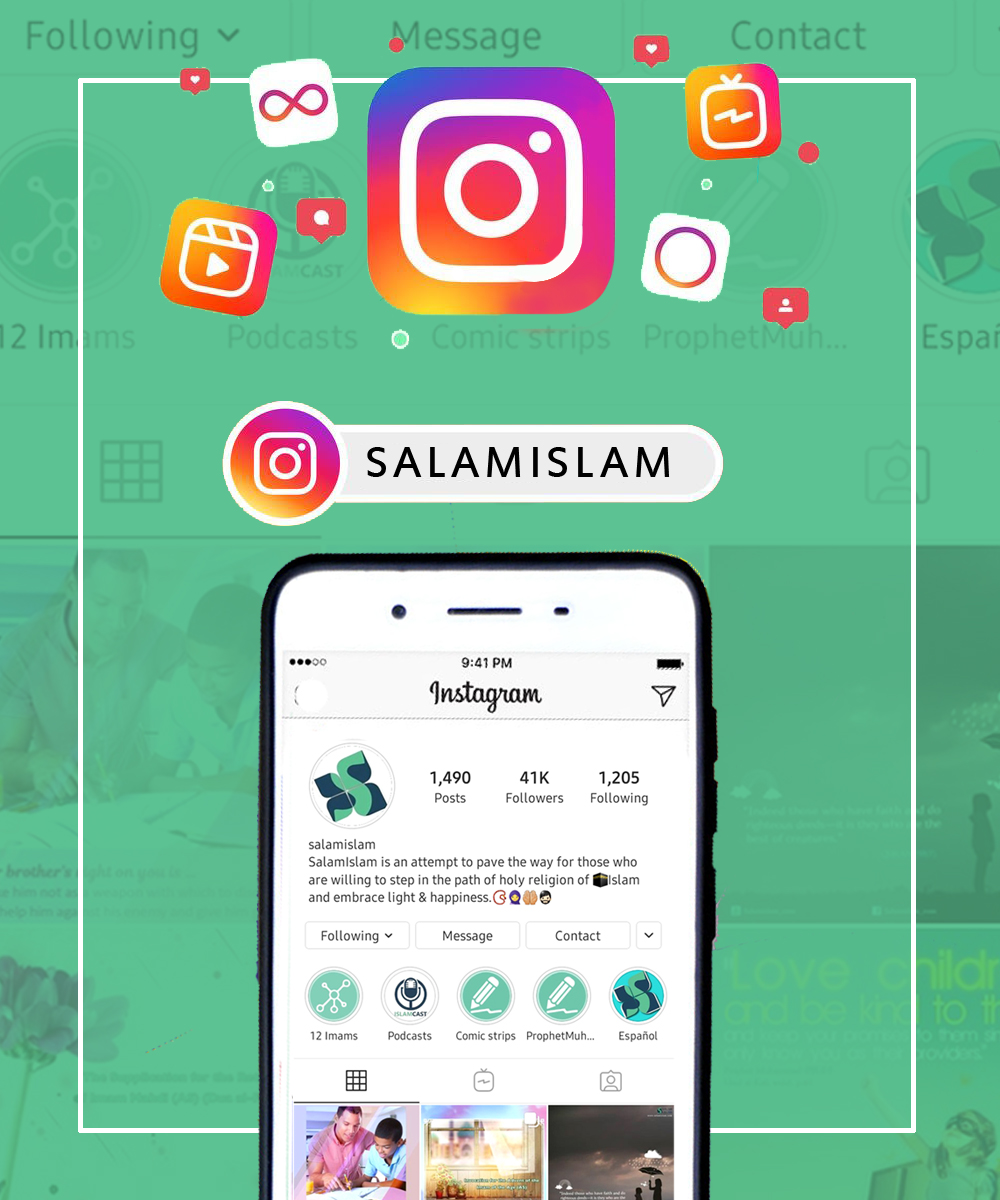

4 Points Proving the Quran to Be a Miracle
Prophethood is a sublime status granted only to those who are chosen. A prophet deals with the heart and souls of humans; it is, therefore, a delicate matter to believe in the one who claims prophethood. Hence, there should be a sign that lets people recognize a real prophet from a fake one; that's "miracle." A "miracle" is an extraordinary act or event that no other human, from the first to the last, can perform it or cause it to happen, except a prophet. It can be neither explained by natural or scientific laws. For Prophet Muhammad (PBUH&HP), the Quran is known as an everlasting miracle that is the most outstanding of Prophet's (PBUH&HP) miracles. The question is: why the Quran is considered as a miracle? Let's find out the reasons.
1. The Quran Is Unique in Style and Inimitable
The Quran is revealed with great eloquence and fluency to convey the message. Precise, poetic, targeted, and meaningful terms used in the Quran are such that no weakness of expression can be found in any of its Ayats. In fact, the words are chosen such that they express the desired meaning in the best way possible (Fasaha) with the minimum usage of words (Balaqa). And, these are features that scholars of Arab literature have noticed in every chapter of the Quran [1].
What makes the Quran a miracle in this regard is that, until the present, no one has been able (and no one will be able) to bring even one short Surah similar to that of this holy book. A Surah that could express the highest scientific facts in simple, comprehensible words and describes different aspects of a scientific matter as clearly as possible. This is an issue that has already been addressed in the Quran: "And if you are in doubt concerning what We have sent down to Our servant, then bring a Surah like it, and invoke your helpers besides Allah, should you be truthful." (2:23). There is no historical account of those who succeeded in defeating this claim of the Quran. If there existed any, those who have always challenged the origin of the Quran should have recorded it.
2. The Quran has been Brought by a Prophet Who Was Uninstructed (Ummi)
According to both historical records and the Quran, Prophet Muhammad (PBUH&HP) was Ummi before he was chosen as a messenger of Allah Almighty; he hadn't been taught by any teacher to read and write 1]. "You were not able to read or write before the Quran was revealed to you; however, the followers of falsehood would have tried to confuse the matter" (29:48). Therefore, the Quran that its words are in extreme eloquence and fluency and reveal sophisticated concepts cannot be Prophet's (PBUH&HP) word. Hence, it is a divine work gained through revelation, a "miracle."
3. Scientific Facts Revealed by the Quran
The Quran is not a book of science or a specialized book, nor has it aimed to concentrate on scientific facts. However, these kinds of information are stated in the Quran to demonstrate the wonders of creation and Allah Almighty's glory.
In this regard, the creation of humans is described in detail in the Quran (23:12-14). In the first step, the human being was fashioned from clay. Other measures include the creation of man from spurting water, a drop of semen, the sperm fashioned into an embryo, this embryo fashioned into a shapeless lump of flesh. From the lump of flesh, fashioned bones, clothed the bones with flesh and then created the consanguinity and affinity [2].
The movement of the earth is another fact mentioned in the Quran: "It is Allah who raised the heavens without any pillars that you see" (13:2). In this verse, it is mentioned that there exist invisible supports that raise up the heavens. These supports are now referred to as the gravitational and other unseen forces in the universe. This scientific fact that is valid today was unknown in that era, and even one thousand years later when Galileo explained this fact and was sentenced to death. That's why it is not explicitly stated in the Quran; otherwise, it would have been banned [1].

4. Accurate Predictions
Some accurate predictions are among the verses of the Quran. This proves that it has been descended from an absolutely knowing source that can report the unseen.
As an example, in the time of Prophet Muhammad (PBUH&HP), Mecca was controlled by polytheists for a while. They did not let Muslims enter the city and do the Hajj rituals. Then, Prophet (PBUH&HP) dreamed that he succeeded in performing Hajj with his companions. This was confirmed in an Ayah: "Certainly Allah has fulfilled His Apostle's vision in all truth: You will surely enter the Sacred Mosque, God willing, in safety, with your heads shaven or hair cropped, without any fear." (48:27). In the next year, this dream came true.
In another case, the Quran has predicted that: "Byzantium has been vanquished in a nearby territory, but following their defeat, they will be victors in a few years." (30: 2-4). Some years later, both predictions came true.
From what has been discussed above, it can be deduced that the Quran cannot be written by a human being. It is undoubtedly from a superior all-knowing all-wise source, which is Allah Almighty. Consequently, the Quran can be considered as one of Prophet Muhammad's (PBUH&HP) miracles, the greatest one, of course.
References:
- Quran
- H. El-Ramady, et al., "Soils and Human Creation in the Holy Quran from the Point of View of Soil Science," Env. Biodiv. Soil Security, vol. 3, pp. 1- 9, (2019).
Share This Article

The Unity of All Monotheistic Faiths
The plurality of different religions is undoubtedly one of the most important issues that concern people who are interested in religious studies today. Some of the questions they may ask include:
- Which religion is right?
- What do they have in common?
- How should the followers of different faiths behave when faced with the followers of other religions?
- Will all religions lead to eternal salvation?
In this article, we will see how Islam regards other religions and more specifically how it deals with the questions above.
All Divine faiths lead to the same God
According to the Islamic viewpoint, all Divine religions have been sent to connect human beings to their Gracious Creator, the only one God. Quran says:
“O People of the Book! Come to a common word between us and you: that we will worship no one but Allah, that we will not ascribe any partner to Him, and that some of us will not take some others as lords besides Allah…” (3:64)
As per this verse, Islam holds that all the other Divine religions root in Monotheism. The idea of God is actually so clear in these monotheistic faiths that some religious studies scholars regard it as an essential requirement for them to be included in the category of religions; in other words, those faiths that have no belief in God or practices of worship cannot be called religion at all.
Moreover, though the followers of some other faiths may worship different gods, all the Abrahamic religions assert the unity of God, and that He is the only Creator. This has been mentioned in the holy Quran many times:
“We did not send any apostle before you but that We revealed to him that ‘There is no god except Me; so worship Me.’” (21:25)
The belief in One God is somehow evident in the other religions as well; lots of them admit the fact that they feel there is some being which created the world and life and influences it to some extent. Quran says:
“If you ask them, ‘Who created the heavens and the earth, and who has disposed the sun and the moon?’ They will surely say, ‘Allah.’” (29:61)
This has also been asserted in the verses of Bible and Torah:
“I am the LORD your God, who brought you out of the land of Egypt, out of the house of slavery. "You shall have no other gods before Me. "You shall not make for yourself an idol, or any likeness of what is in heaven above or on the earth beneath or in the water under the earth.…” (Exodus 20:3) [1].
Islam Has Completed the Previous Religions
Contrary to popular belief, the religion of Islam does not deny the truth of the previous monotheistic religions, rather the religion of God was perfected in Islam through the revelation that was sent to the last messenger of God, Prophet Muhammad (PBUH):
“We have sent down to you the Book with the truth, confirming what was before it of the Book and as a guardian over it…” (5:48)
In fact, Islam has been revealed to purify the previous faiths from distortions and to complete their teachings:
“Today I have perfected your religion for you, and I have completed My blessing upon you, and I have approved Islam as your religion…” (5:3)
The advent of Prophet Muhammad (PBUH&HP) with his true religion was also predicted in the Bible:
“When the Spirit of truth comes, He will guide you into all truth. For He will not speak on His own, but He will speak what He hears, and He will declare to you what is to come” (John, 16:13) [2].
Muslims Respect the Followers of the Previous Monotheistic Faiths
Also, Islamic teachings and the holy Quran always emphasize the significance of respecting the freedom and other rights of the followers of the previous religions; Muslims, accordingly, hold the followers of those religions in high regard:
“Do not argue with the People of the Book [the followers of the previous monotheistic faiths] except in a manner which is best, except such of them as are wrongdoers, and say, ‘We believe in what has been sent down to us and in what has been sent down to you; our God and your God is one [and the same], and to Him do we submit.’” (29:46)
In Islam “There is no compulsion in religion” (2:256), and even if one chooses to follow another monotheistic faith other than Islam, he/she has every right to live in peace among Muslims as an honored citizen with all rights and privileges [3].
Islam Is a General Title for All the Prophets’ Call
“So set your heart as a person of pure faith on this religion, the original nature endowed by Allah according to which He originated mankind…” (30:30)
Muslims believe that the innate religion is something both Muslims and non-Muslims possess by birth; this original religion is what Muslims define as Islam. They also hold that the differences between various religions are due to particular requirements and potentials of societies during the various periods of prophecy:
“We did not send any apostle except with the language of his people so that he might make [Our messages] clear to them.” (14:4)
Consequently, the calls of the prophets were alike since all their invitations originated from a single source and followed a unified line of faith with a single aim, i.e., submission to the Lord of the worlds, which is the real meaning of Islam:
“Indeed, with Allah religion is Islam” (3:19)
In fact, Islam, i.e., submission to Allah is the cornerstone of all religions.
So, Muslims testify to the truth of all God’s Messengers and that they have all agreed with each other, each of them testifying to the truth of the words of the preceding Prophets (AS) and giving the tidings of the Divine appointment of the next Messenger:
“Say, ‘We have faith in Allah and what has been sent down to us, and what was sent down to Abraham, Ishmael, Isaac, Jacob and the Tribes, and that which Moses and Jesus were given, and that which the prophets were given by their Lord; we make no distinction between any of them and to Him do we submit’” (2:136).
Indeed, with Allah religion is Islam [4]
Islam is a religion for all human beings of all time:
“We did not send you [Muhammad] but as a mercy to all the nations” (21:107)
This verse clearly indicates the universality of the message brought by Prophet Muhammad (PBUH&HP).
Although the holy Quran regards belief in the prophets a major basis of a Muslim’s ideology, it maintains that what was revealed to the last Prophet, Muhammad (PBUH&HP), was the most advanced program and the perfect law of the divine religion:
“It is He who has sent His Apostle with guidance and the true religion that He may make it prevail over all religions though the polytheists should be averse” (61:9).
Accordingly, it will not be accepted by Allah to remain on the previous incomplete paths after the revelation of the Holy Quran:
“Should anyone follow a religion other than Islam, it shall never be accepted from him, and he will be among the losers in the Hereafter” (3:85).
There Will Be No Fear for the True Followers of Other Faiths
The verse above does not, however, mean that the followers of other faiths will be all losers. Quite the opposite! There are believers who have not had a chance to reach the completed and updated truth, or those who are exposed to intense propaganda against Islam and think it is impossible that such a religion (distorted image of Islam) might be the right way to salvation, or even those Christians, Jews or any other believers who have searched enough and have been convinced, based on reasons, that their beliefs are right (even if their reasons seem invalid and wrong in the eyes of Muslims); what do you think Quran says about them?
“Indeed, the faithful, the Jews, the Christians and the Sabaeans—those of them who have faith in Allah and the Last Day and act righteously—they shall have their reward from their Lord, and they will have no fear, nor will they grieve” (2:62).
Finally, going through the Quranic verses about religions and their messages, we may conclude that Islam encompasses all the other divine revelations; the ones that have been distorted throughout history, or simply do not sufficiently meet people’s needs any longer; Islam is, in fact, the final, authentic, complete, and updated message of God that draws a perfect picture of man and the base for his reformation that will ultimately lead to his salvation.
References:
- Exodus 20:3
- John 16:13
- monptheisim
- Quran 3:19
- monotheistic faith
Read More

Afterlife
As other axioms, the afterlife (Ma’ad) is one of the first requisites for stepping into the religion of Islam and is defined as the existence of another world that creatures enter after their death, where they experience eternal life. It is noteworthy that the belief in receiving revelation and prophethood (Nubuwwah) builds the foundation of this axiom; in other words, one cannot find acceptance in the afterlife unless he comes to faith in prophethood and more importantly, monotheism (Tawhid).
Nevertheless, prophets didn’t come to impose the idea of Ma’ad on their followers, rather led people’s mind to ponder on this issue and recognize its validity. The reason for this concept to be considered as an axiom is that Islam not only wants us to have faith in the afterlife dependent on the belief in prophethood but also through individual and conscious investigation.
How to Find Faith in the Afterlife?
Aside from revelations that prophets received, there are some other ways and proofs for coming to believe in the afterlife which is the result of the intellectual and scientific efforts of human beings, including the knowledge of God, the universe, and human soul. Here we will briefly introduce each of these ways.
1. God’s Attributes
This argument which is based on the axiom of monotheism (Tawhid) -God exists and is the only one and should be accepted through rational thinking -, claims that God cannot be considered perfect and wise unless we believe in the existence of a world beyond this material world, an afterlife. In other words, without afterlife, the whole creation will become meaningless and vain.
If we find a wisdom governing the universe, then it necessitates the existence of another world which complements creation and forms a part of it. But why? We justify this issue based on God’s attributes.
Divine Justice
God is just and has built the foundation of the universe, heaven, and earth on Justice. Human’s life, also, is placed within this just order; therefore, God’s justice requires every creature to be endowed with what they deserve in order to avoid denying their right.
The reward of many good deeds is not obtained in this world, just as many sins that cannot be punished thoroughly during this earthly life. Accordingly, since this world is limited and does not have the capacity to provide human beings with their deserved rewards or punishments, another world with infinite and unlimited time must exist in order to make up for the rights that people have not acquired in this world.
Divine Wisdom
Wisdom is attributed to one whose deeds are always purposeful and would result in a specific and clear goal. Therefore, the wise God does not commit any absurd or nonsensical deed, otherwise, his action would be the result of his ignorance and lack of knowledge.
Moreover, the creation will not be meaningless, if it leads to eternity; if the creatures have been created for eternity and permanent endowment from God, then it shows an existence – as opposed to nothingness, inexistence – and continuity, thus it would not be absurd.
In addition, he has created every creature for a special purpose and has provided them with the means of reaching it. If He has endowed them with certain desires and capacities, then surely He has anticipated the appropriate answer for them, too.
For instance, in response to the urge for thirst or hunger in animals, He has created water and food in order to satisfy this need of them. Similarly, He has bestowed upon human beings the desire for immortality and eternal perfections; most of us feel the urge for eternity and unending life, as well as everything good in its best way.
If there were no way of reaching these desires, then why would God have placed them in human beings? These feelings do not fit into this earthly life and cannot be satisfied here; our All-wise God has for sure devised a plan for mankind to fulfill these needs, that is creating a world where they are able to experience everlasting life and achieve what they long for in their perfect forms.
2. Universal Phenomena
Looking around, we can find many instances that remind us of the Resurrection and the revival of human beings in the afterlife. The very first thing that comes to mind when we think about the creation of the universe, is that the same power and wisdom that has created this world also has the power and ability to create another one. When we compare this power to our own capabilities, the occurrence of the afterlife seems far-fetched, however by the omnipotent being who has brought this world into life, this act is not at all infeasible.
Moreover, we are faced with many incidents in this world, on a daily basis, which is fairly similar to what will happen in the afterlife; we have seen them so many times that we have got used to their happening and consider them typical and insignificant, however at a closer look, we can find out the systematic and repeated order that governs the universe.
We constantly experience the cycle of life and death in nature with the change of seasons, that with the coming of winter and autumn everything - trees, flowers, etc. - on earth seems to be dying, and by spring, the sky sends its drops of rain to awake the hibernating earth and bestows a new breath on it.
Considering God’s power, the afterlife thus is neither impossible to happen nor something beyond our understanding or illogical based on the events that take place in the universe.
3. Human Being’s Soul
What we as human beings consider as our “self” or “I” is in fact a fixed and permanent fact. This “I” is actually the soul in mankind which is an immaterial and unchanging reality and has every action of the body under its control.
The axiom of the afterlife cannot be accepted unless one has a belief in the existence of a soul in human beings independent of their body, which is responsible for their conscious choices and deliberate actions. Otherwise, the belief in the afterlife is not possible, since if we see human beings as only this body that would be destroyed and diminished by death, then we cannot expect them to be revived exactly as the same; the human being that will be brought to life again would be for sure a different creature.
The only valid assumption would be that when a person dies his soul continues to exist until it returns to the body. Accordingly, the issue of the afterlife is justifiable through the knowledge of the human being’s reality which leads us to consider him as an immortal and infinite being.
Furthermore, as it was mentioned above, human beings are endowed with certain capacities - desire for immortality, to have eternal perfections - which are not fully compatible with the characteristics of this world and require another world for their fulfillment. If there were no resurrection for human beings, then his creation would be pointless from the very beginning, since his perfection has not manifested itself in this world and the means of receiving this goal would become useless and in vain.
To conclude, the aim of creation is going back toward God and to attend His final judgment among His creatures on Resurrection Day; everything in this world has been created to return to its God, reach eternity and never fail to exist.
They have come to life in order to pursue the path to their perfection and ultimately join God Almighty. It is noteworthy that the afterlife is not considered as dependent and the result of this world, but rather as a necessity and introductory for this earthly life; God has created this Universe, especially human beings with their extraordinary capacities - the power of the mind, the urge for seeking God and joining Him, etc.-, for becoming immortal in the afterlife and reaching the summit of their capabilities and eternal bliss; thus this world only provides the ground for the ultimate goal of creation. Afterlife is the final destination of creation and this world is only a temporary dwelling.
Read More

